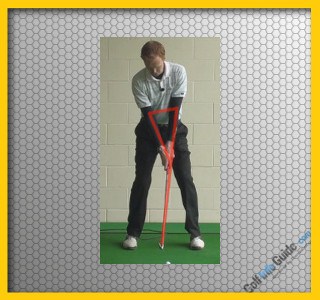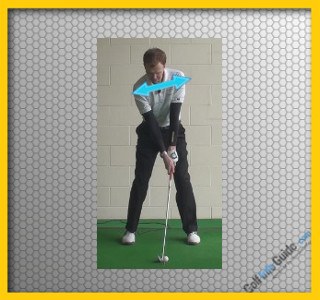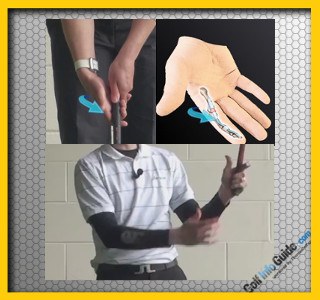Top Tips On Irons and Hybrids Shaft Angle
The proper shaft angle of our club at address is often over looked and if out of position can cause a few flaws in the swing. First, a shaft angle that’s set too neutral or behind the ball can create a very high ball flight when struck solidly but more often than not it leads to misses like fat, top and scull. Second, if there’s too much shaft lean towards the target, or the hands are positioned well ahead of the ball we’d expect to see a much lower ball flight with misses such as slicing or pull hook.
When the shaft is set too neutral it naturally adds loft to the club. When the shaft has too much lean towards the target it naturally decreases the loft.
An important note with regards to the proper shaft angle is that wherever it starts, it will most likely end up. Meaning, if in the address position you start with shaft leaning away from the target, there’s a good chance your body will do everything possible to deliver it back to the same spot at impact. It becomes imperative that we create a proper shaft angle at the address position.
The proper shaft angle at impact would see the hands in a position equal to or slightly ahead of the ball. Ideally you should be able to draw a relatively straight line from club head directly up to the shoulder. However, if we don’t set up in this fashion it will take a lot of work in our swing to recreate it at impact.
The following tips will help you achieve proper shaft angle at address for both irons and hybrids.

The straight line we’ll be talking about is the relationship between a straight left arm (right arm for left handed golfers) and the shaft at address. To achieve the perfect shaft angle for every club, it’s important to have the shaft of the club and left arm form a straight line. You can check this relationship by standing in front of a mirror. If you notice the two parts don’t line up, it likely means your shaft angle needs to be adjusted. When you start with the proper relationship at address, it gives us the best chance to start our swing on plane and re-deliver the club to a good impact position.

This is a check you can do without a mirror. At the address position, give a quick glance down and make sure the hands are equal to or slightly ahead of the ball. If you notice the ball is ahead of the hands, then either back away and start over or simply give the hands a slight push forward. This will help give the shaft a slight lean and get your swing started on line.

When it comes to proper set up, we often see players start their swing with very straight shoulders. If you watch the professionals, you’ll notice that in their set up they will have a very slight should tilt where the left shoulder is a little higher than the right (opposite for left handed golfers). The shoulder tilt becomes more prominent as the length of club gets longer. When you give your shoulders a tilt it will naturally move your left arm further up giving you the desired shaft angle at address. When there’s a tilt it also helps to create more rotation and less rocking of the shoulders in the backswing keeping our club on plane longer.

It’s true, the grip can cause great heartaches. A very common flaw with regards to how we grip the club is that there’s a tendency to grip it high in our palm. What this does is shuts down our wrists from functioning properly and increases our grip pressure. If we take our grip and have the club more in the fingers, it will free up our wrists and allow the club to flow more naturally. When our hands aren’t functioning in the swing, it will be nearly impossible to get the club back to a proper angle at impact. The final moments before impact are very important and the club needs to have the least amount of restriction to ensure it moves properly. When it’s in our palms the arms take over and we see lots of casting or very narrow golf swings. Grip the club in the fingers for the best chance of getting yourself into a proper impact position.






